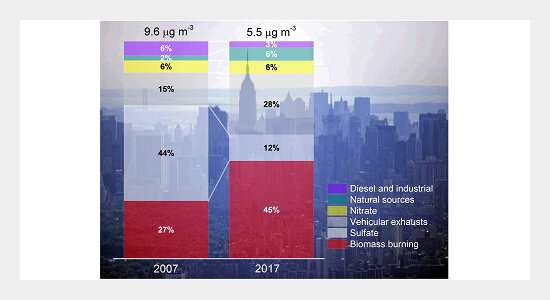The vicious cycle of extreme weather and biomass burning

There is a downward spiral of extreme weather and pollution from wildfires, domestic heating and energy production in the New York and New Jersey area, according to a new study by CUNY SPH Professors Ilias Kavouras and Glen Johnson and 2022 DPH graduate Subraham Singh, in collaboration with Professor David DuBois, director of the New Mexico Office of Climate.
The study suggests that pollution and extreme weather feed into one another, resulting in a vicious cycle that will only get worse with time. The research team monitored sources of fine particulate matter (PM2.5) in four sites in the New York/New Jersey area from 2007 to 2017 and found that wintertime biomass burning aerosols were most likely due to combustion of contemporary biomass for industrial and domestic heating, and was linked to the intensity (average minimum temperature) and duration (number of freezing days) of cold spells. During summer, biomass burning was correlated with the number and area burnt by lightning-ignited wildfires.
Published in Aerosol and Air Quality Research, the study found that PM2.5 sources in urban environments are changing from anthropogenic secondary sulfate and nitrate to carbonaceous aerosol from local anthropogenic and regional climate-driven biomass burning. This trend may counterbalance emissions controls on anthropogenic activities and modify the biological and toxicological responses and resultant health effects.
"The inhalation of atmospheric aerosol is linked to the onset of cardiovascular and cerebrovascular diseases including myocardial infarctions, ischemic stroke and heart failure," says Kavouras. "To improve air quality, we must look beyond our backyard, we must think regionally and globally and act appropriately. It requires a shared vision to engagements and coordination across jurisdictions, states and countries to act and allocate resources timely and effectively."
More information: Subraham Singh et al, Assessment of the Contribution of Local and Regional Biomass Burning on PM2.5 in New York/New Jersey Metropolitan Area, Aerosol and Air Quality Research (2022). DOI: 10.4209/aaqr.220121
Provided by The City University of New York





















